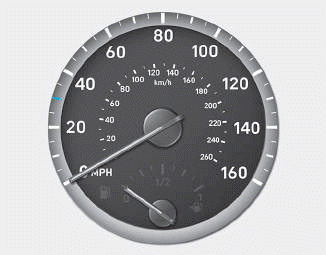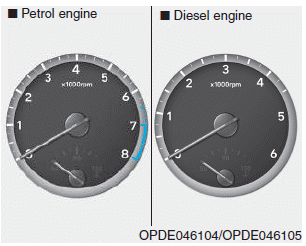Hyundai i-30: Cooling System / Radiator
Components and components location
| Components |

| 1. Radiator assembly 2. Mounting insulator 3. Radiator upper mounting bracket |
4. Radiator upper
hose 5. Radiator lower hose 6. Filler neck assembly |
Repair procedures
| Removal and Installation |
| 1. |
Drain the engine coolant.
(Refer to Cooling System - "Coolant")
|
| 2. |
Remove the cooling fan.
(Refer to Cooling System - "Cooling Fan")
|
| 3. |
Remove the radiator upper hose (A).
|
| 4. |
Remove the radiator lower hose (A).
|
| 5. |
Remove the radiator upper mounting bracket (A).
[LH]
[RH]
|
| 6. |
Remove the front bumper cover.
(Refer to Body - "Front Bumper Cover")
|
| 7. |
Remove the intercooler assembly.
(Refer to Intake and Exhaust System - "Intercooler")
|
| 8. |
Remove the front bumper rail assembly.
|
| 9. |
Remove the radiator air guard (A).
|
| 10. |
Separate the A/C condenser from the radiator assembly.
[LH]
[RH]
|
| 11. |
Remove the radiator assembly (A) from the vehicle.
|
| 12. |
Install in the reverse order of removal.
|
| 13. |
Fill the radiator with coolant.
(Refer to Cooling System - "Coolant")
|
| 14. |
Start engine and check for leaks.
|
| 15. |
Recheck the coolant level.
|
| Inspection |
Reservoir Tank Cap Testing
| 1. |
Remove the reservoir tank cap, wet its seal with engine coolant, and
then install it on a pressure tester.
|
| 2. |
Apply a pressure of 93.16-122.58kPa (0.95-1.25kgf/cm², 13.51-17.78psi).
|
| 3. |
Check for a drop in pressure.
|
| 4. |
If the pressure drops, replace the cap.
|
Radiator Leakage Test
| 1. |
Wait until engine is cool, then carefully remove the reservoir tank
cap and fill the reservoir tank with engine coolant, then install it
on the pressure tester.
|
| 2. |
Apply a pressure tester to the radiator and apply a pressure of 93.16-122.58kPa
(0.95-1.25kgf/cm², 13.51-17.78psi).
|
| 3. |
Inspect for engine coolant leaks and a drop in pressure.
|
| 4. |
Remove the tester and reinstall the reservoir tank cap.
|
 Cooling Fan
Cooling Fan
Components and components location
Components
1. Cooling fan
2. Fan motor
3. Cooling fan
shroud
4. Cooling fan controller (PWM)
Repair procedures
Removal and installation
Cooling Fan
1...
 Reservoir Tank
Reservoir Tank
Repair procedures
Removal and Installation
1.
Drain the engine coolant.
(Refer to Cooling System - "Coolant")
2...
Other information:
Hyundai i30 (PD) 2018-2025 Service Manual: Cluster Ionizer
Components and components location Components Location 1. Cluster lonizer Description and operation Description The cluster ionizer makes disinfection and decomposition of bad smell from the air-conditioner or inflow air...
Hyundai i30 (PD) 2018-2025 Service Manual: Electric Exhaust Gas Recirculation (EEGR) Control Valve
Description and operation Description The Electric EGR Control Valve is installed in between the EGR cooler and the exhaust line and is a solenoid valve. This valve controls EGR (Exhaust Gas Recirculation) amount by the ECM's duty control signal depending on engine load and the need of intake air...
Categories
- Manuals Home
- 3rd Generation i30 Owners Manual
- 3rd Generation i30 Service Manual
- Brake/clutch fluid
- To activate the ISG system
- Battery replacement
- New on site
- Most important about car
Gauges and meters
Speedometer

The speedometer indicates the speed of the vehicle and is calibrated in kilometers per hour (km/h) and/or miles per hour (MPH).
Tachometer

Copyright © 2025 www.hi30.net












